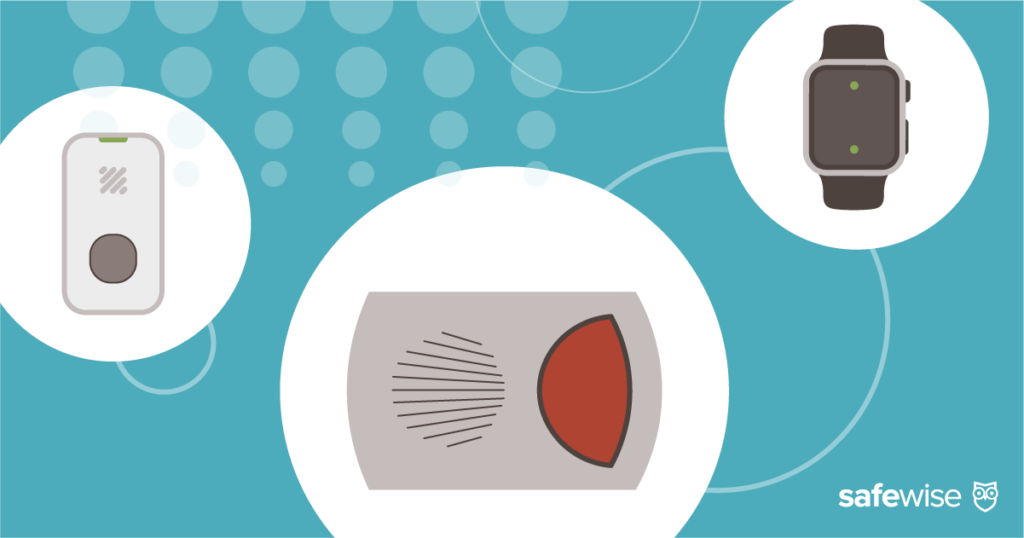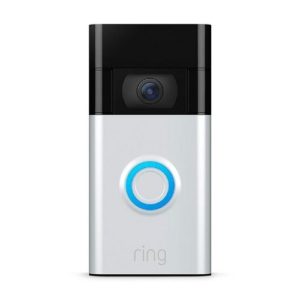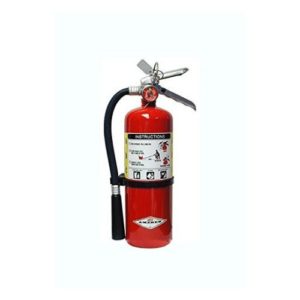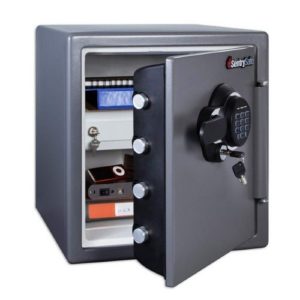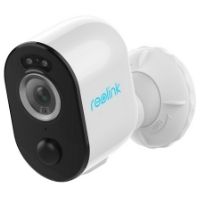Is your home secure? Are you prepared for an emergency? Whether you've lived in your home for two weeks or 12 years, this home assessment will help you find ways to make your home a safer place for you and your loved ones.
Complete Home Safety and Security Checklist
For over 11 years, SafeWise experts have conducted independent research and testing to create unbiased, human reviews. Learn how we test and review.
By signing up, you agree to our Terms and Conditions and Privacy Policy.
Home safety assessment checklist
1. Make sure valuables aren't visible from the street
Residential burglaries account for about 60 percent of all break-ins in America. If you can see valuables inside your home from the street, so can a burglar. Burglars are notorious for “window shopping” so we encourage you to keep valuables, like cash, jewelry, electronics and guns, out of view.
Keeping valuables out of sight is smart, but adding a home security system lets burglars know they're more likely to get caught. Check out our reviews to find out how easy and affordable it can be to add home security to your home.
2. Don't give burglars hiding spots near doors and windows
Burglars are always looking for ways to get into your home without being seen. Overgrown shrubs give them the concealment they want to break into your home without the neighbors noticing. Keep shrubs trimmed and be sure to use the yard signs and window decals provided by your home security company to alert potential burglars that your home has help being protected.
3. Upgrade doors to solid wood or metal clad
Over one third of burglars enter a home through the front door. An old wooden door or a hollow one can be kicked in within seconds. Help beef up your home’s security by installing a windowless solid wood or metal clad door.
Here are more ways to secure your doors:
- Replace a standard door with one that's made for security.
- Add extra security with a door jammer or security bar.
- Get more door security tips from a professional locksmith and lock expert.
4. Light up entryways and pathways at night
A dark entrance or pathway is not only a safety hazard, it’s like rolling out the welcome mat for a burglar. We encourages you to use pathway lighting and motion lighting to illuminate your home’s exterior. Some alarm monitoring providers even offer apps that let you control your home’s lighting from your smartphone.
5. Make sure your house number is clearly visible from the street
When an emergency strikes, every second counts. Make sure that police, firefighters, and/or paramedics can quickly find the right house by keeping your house numbers visible. We advise checking your house numbers quarterly to ensure they haven’t faded or been obstructed by vegetation.
6. See who’s at the door before you open it
Opening the door to your home without knowing who’s on the other side can be frightening and dangerous. We urge homeowners to select a quality door that’s equipped with a peep hole. If your home already has a quality door installed, but it doesn’t have a peep hole, you can purchase one and install it in the door. Wide angle peep holes are best because they offer the greatest range of view.
If adding a peep hole isn't the best solution for you, doorbell cameras are another great way to see what's going on outside the front door.
Read reviews of our favorite video doorbell cameras:
7. Have a cell phone handy in case of cut wires
Even if you don’t use a cell phone as your primary means of communication, having one handy is a good safety and security precaution. Some thieves will cut phone lines before they enter the home, so having a charged cell phone to call for help can benefit you.
8. Give a neighbor a spare set of keys to your home
It’s always a good idea for a neighbor to be armed with a set of spare keys should you get locked out or if they need to enter your home in the event of an emergency. Just make sure it’s a neighbor you can trust.
9. Put your mail on hold when you travel
There are certain things a burglar looks for when he’s casing a neighborhood; an overflowing mailbox is one of them. Have your mail held at the post office when traveling for an extended period of time or have a neighbor/relative pick the mail up for you.
For more tips to protect your home when you're away, check out our Ultimate Guide to Preparing Your Home Before Vacation.
10. Have an emergency escape plan in case of a break-in
A burglar trying to break-in is a homeowner’s worst nightmare. We believe you can never be too prepared for the unthinkable, so establish and practice an emergency escape plan with your family once or twice a year to make sure everyone is prepared in the case of a break-in.
Break-ins are only one type of emergency you should prepare for. Be ready for anything with our emergency guides:
- Find out who you should call first in an emergency.
- Learn how to put together an emergency plan for your whole household.
- Stock your pantry with our guide to emergency food planning.
- Check out our picks for the best emergency survival kits.
11. Display yard signs or window decals that state your home is monitored
Be sure to display the yard and window decals that your home security company provides you with. We recommend placing these decals on the windows that face the side and rear of your home, as well as in the front, because burglars enter through windows and doors in over half of all unoccupied break-ins.
12. Have fire extinguishers easily accessible throughout your home
In 2012, a home structure fire was reported every 85 seconds in America. If a fire were to break out in your home right now, is your fire extinguisher easily accessible and functional? In addition to fire extinguishers, we suggest adding smoke and fire monitoring to your home security plan so your family will be alerted the moment trouble is detected.
Home fires are devastating. We've got more resources to help your family stay prepared:
- See our picks for the best fire extinguishers for your home, car, and kitchen.
- Learn how home security systems can protect against fires and floods.
- Check out our whole home fire safety guide.
13. Install keyed deadbolt locks on all of your doors
A burglary occurs roughly every 20 seconds in the U.S., outfitting your home’s front and back door with a hardened steel bolt is your first line of defense against a burglar because it makes the door much more difficult to kick in. Learn more about upgrading your door locks:
- See our roundup of the best door locks for home security.
- If you rent, we've also got the best door locks for apartments.
- Get extra tips to help make your doors more secure.
14. Add motion-sensor lights
The last thing a burglar wants is the spotlight. Incorporate motion-sensor lighting into your home security plan and you’ll send a strong signal to burglars that you take protecting your home seriously. In addition to securing the perimeter of your home, we advise also using motion-sensor lighting to secure sheds and garages.
15. Use secondary locks or a rod in the track on sliding glass doors
Burglars love sliding doors, especially during the summer when they’re often left unlocked or open. You should know July and August are the two hottest months for break-ins, so be sure your sliding doors are locked, and outfitted with a secondary locking mechanism or dowel to provide additional security.
We've got resources to make it easy to secure your sliding glass door:
- See our complete guide to securing your sliding glass door.
- Find out our picks for the best sliding glass door locks.
16. Add secondary locks to windows
Windows account for a quarter of all break-in entry points. That’s because they are frequently left unlocked, or outfitted with cheap window locks make them vulnerable to attack. Make it difficult for anyone to get in with help from secondary locks and window sensors.
Don't leave your windows vulnerable:
- Find the best aftermarket window locks.
- Add security film to reinforce your windows.
- Use a standalone window sensor to alert you to tampering.
17. Use timers with your lights
Daytime burglaries account for more than 50 percent of all break-ins, but a dark house is practically begging for a break-in. Inexpensive, easy to install, and simple to operate, there’s no reason why you shouldn’t have timers on your lights to make your home look occupied while you’re out and about. Alternatively, many home security companies offer apps that let you turn lights on and off right from your smartphone.
18. Keep an inventory of your personal property in case of theft
In the event of a burglary, you don’t want to forget to include any stolen property on a report for the police or an insurance claim. Keeping an inventory of your personal property helps ensure you are compensated for all losses. But there are many things to do after a break-in, here are our tips for filing a claim and other ways to recover after a burglary.
19. Keep medications out of sight
Keeping medications out of sight means helping keep them out of the hands of burglars who could use your meds themselves or sell them on the street. Keeping your medicines off the counter helps reduce the temptation. Learn more about medication safety at home.
20. Store valuables in a safety deposit box or safe
To keep your valuables protected, your best option is to keep them somewhere difficult for potential burglars to reach, such as a safety deposit box or a home safe. Both of these can only be opened with a key or combination, so intruders can’t easily access them.
Find more ways to protect valuables and sensitive information:
- Keep firearms out of the reach of burglars and kids with our picks for the best gun safes.
- We've also got the best safes to keep firearms secured in your car.
- See our tips to keep important documents safe at home.
21. Get to know your neighbors across the street and on all three sides of your home
Good neighbors look out for each other and share any suspicious activity they’ve noticed around other homes, particularly when someone is out of town or at the office. Knowing your neighbors is crucial for maintaining a sense of security in your area.
Use our tips and resources to be a good neighbor who puts safety first:
- Use neighborhood and crime apps to find out how safe your neighborhood is.
- Check out five easy ways to help make your neighborhood safer.
- Bookmark our package protection hub to help keep porch pirates out of your neighborhood.
22. Don't leave a house key under your door mat
Under the door mat is often one of the first hiding places a burglar will check for keys. Your best bet is to leave a spare key with a nearby, trusted neighbor or relative.
23. Lock the gate(s) to your backyard
About 30 percent of all burglaries occur when a door or window is left open or unlocked, including those in the backyard. Keep the gates to your backyard locked, especially at night and when you are not at home, to help keep chances of burglary to a minimum. For more ideas, check out our complete guide about How to Burglar-Proof Your Backyard.
24. Lock up grills, lawn mowers, bikes, and other outdoor valuables
Any valuable property that is kept outdoors should be locked up when not in use to keep it from being easily accessible for burglars. If you can put it out of sight and lock it up, that’s even more ideal.
25. Lock all doors at night and every time you leave the house
It doesn’t take long for a burglar to break into your home, especially if a door is left unlocked. Even if you’re only leaving home for a moment, it’s important to always lock the door behind you. The same goes for locking the doors at night. Even if you’re home, the doors should be locked.
Never forget to lock the door by adding a smart lock with an app that lets you lock up from anywhere.
26. Shred documents with personal information
Even if it’s something like unwanted junk mail, you should always shred any document that may have personal information on it before throwing it in your trash can. This can help you ensure your personal identity is less at risk for being stolen.
Learn about the risks of identity theft and how to avoid it:
- What to do if your identity is stolen.
- See our picks for the best identity theft protection.
- Find out how to avoid online scams.
27. Check that doors fit tightly in their frames
While an unlocked door is the most common entry point for a burglar, a flimsy door is another common way to break-in. If your doors do not fit tightly, you should install weather stripping around them to better hold them in place.
28. Get involved in your neighborhood watch program
A good quality neighborhood watch program is to have a focus on educating neighbors on how to actively look out for one another to prevent or lessen crimes in their area. Burglaries decreased more than 30 percent nationwide throughout the 1990s, thanks to neighborhood watch programs.
29. Rekey all of your doors when you move in
If your home or apartment was owned by someone before you, they (or whoever they gave keys to) could still potentially have a key that can unlock your doors. It’s best to rekey your home—which is easier than changing out all of the locks—so only you have all of the copies of the key to your home.
30. Keep tabs on neighborhood break-ins
If a house in your neighborhood has been broken into, you need to be on higher alert about your own home security. You could face an increased risk of burglary, as burglars may return to the area of a successful break-in and target similar homes nearby.
31. Secure mail slots, dryer vents, and pet entrances where a burglar could enter
Even if you keep all of your doors and windows locked, burglars can still attempt to access locks from a dryer vent, mail slot or pet entrance. It’s important to have some sort of box, cage, or other locking mechanism over these possible entry points to help keep your home as burglar-proof as possible.
32. Make sure your home’s exterior is well lit
If you have the right outdoor lighting in place, a well-lit home could help deter burglars from trying to enter your home. It’s easier to be seen with outdoor lighting, so burglars are more likely to stay away from lights and go in search of darker places to target.
Find the right kind of outdoor lighting for your property:
33. See how well-lit your street is at night
In addition to having a well-lit home, having a well-lit neighborhood can be another deterrent for burglars. If the neighborhood is kept well-lit at night, it can help the area be safer to walk around, and burglars are more likely to stay out of the neighborhood as a whole.
34. Get monitored home security
Home security providers can offer 24/7 monitoring of your home and can notify you of emergencies in your home, including fire, carbon monoxide, or a burglary, wherever you are. You’ll also have a trained monitoring specialist on the line ready to help you contact the authorities if necessary. Compare alarm monitoring providers to find the right one for you.
See all of our home security guides:
35. Add outdoor security cameras
Convicted burglars have repeatedly said they’d avoid targeting a home with video surveillance. If you’re looking to take your home security to the next level, surveillance cameras can be a strong addition to any home security strategy.
36. Make sure all carbon monoxide detectors are working
Each year, more than 150 people die from non-fire-related carbon monoxide poisoning. We recommend installing carbon monoxide detectors and test them regularly (once a month) to make sure you’re protected against this invisible danger.
37. Regularly test smoke detectors
Three out of five house fire deaths occur in households without working smoke alarms. Make sure to check batteries and test your smoke detector regularly (at least twice a year).
Watch our interview with the National Fire Protection Association for more tips to protect your family from a house fire.
38. Store ladders and tools in a locked garage or shed
Don’t give would-be burglars the tools they need to break into your house. Make sure tools, ladders, and any other equipment they could utilize is kept locked away.
If you’re like most homeowners, you may not know about all of the things that would make your home vulnerable. Now that you’ve gone through our home security checklist, you can assess possible weaknesses in your home and fix areas that will help burglar-proof your home.
Related articles
Recent Articles


